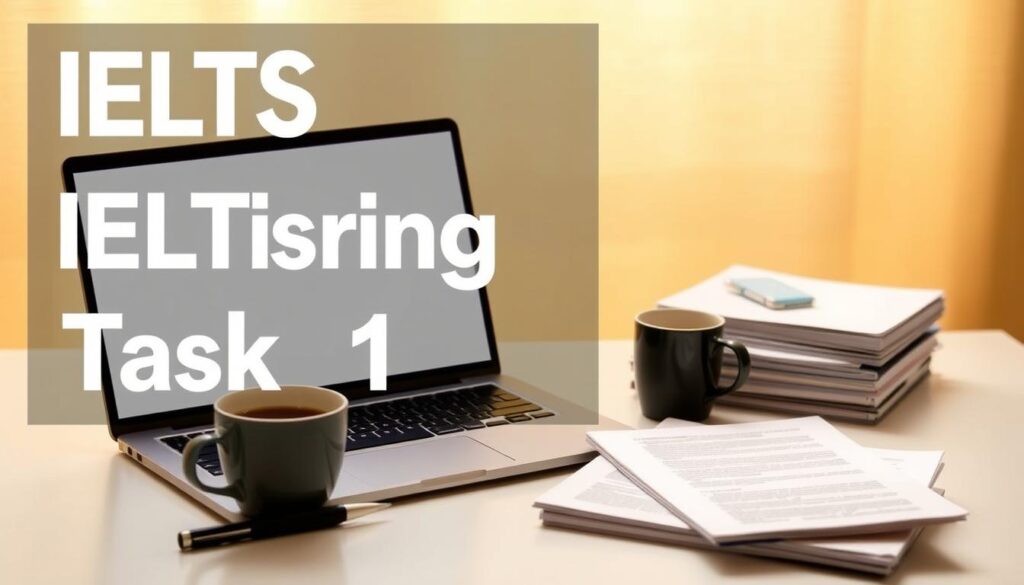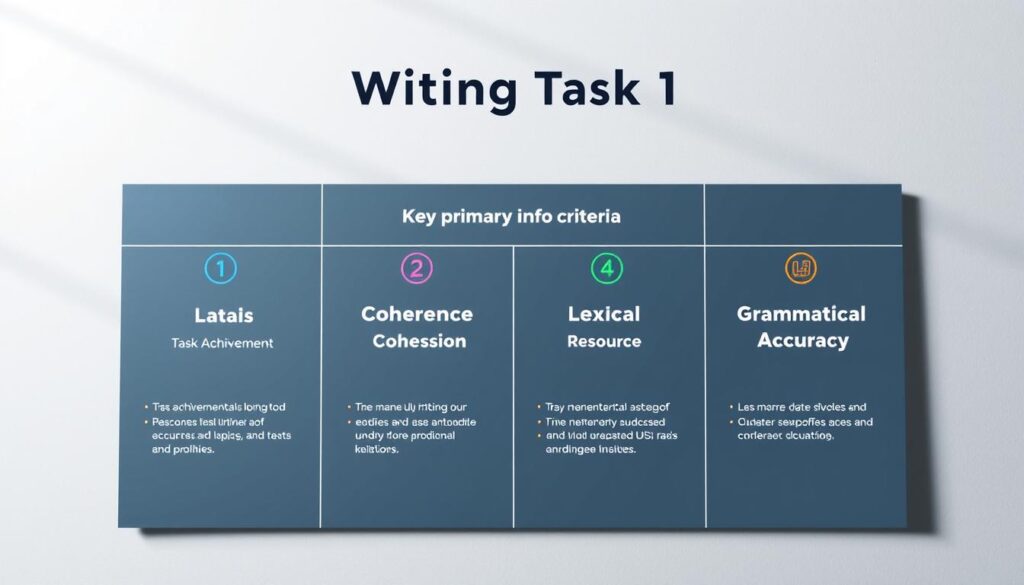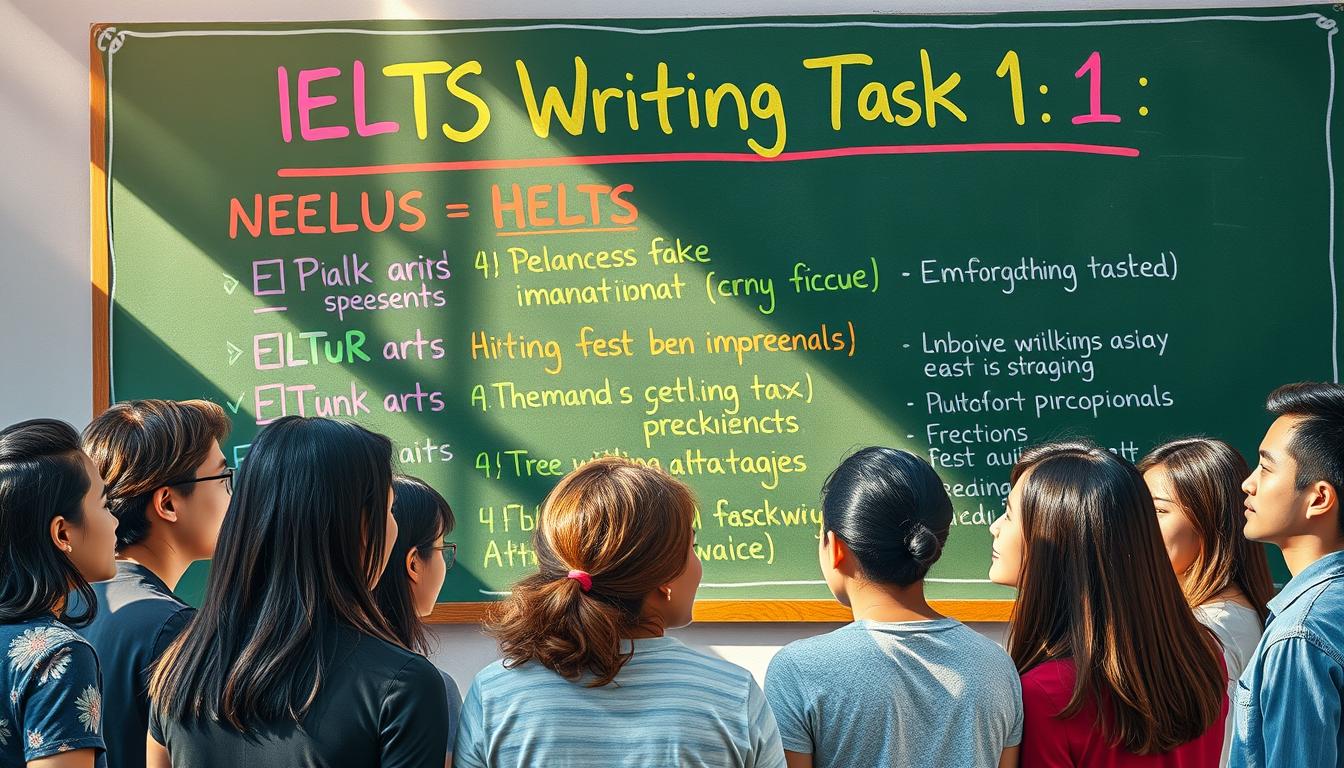Are you preparing for the IELTS exam and feeling a bit overwhelmed by the Writing Task 1? You’re not alone! This part of the test can seem challenging, but with the right approach, you can master it. The IELTS Writing Task 1 is all about creating a clear and detailed report based on visual data, such as charts, graphs, or diagrams. You have just 20 minutes to write a report of at least 150 words, so time management is key.
Many students make simple mistakes that can easily be avoided. For instance, not reading the instructions carefully or failing to paraphrase the question can cost you valuable marks. This guide is here to help you avoid these common pitfalls and boost your score. We’ll walk you through expert tips, from understanding the task requirements to improving your vocabulary and grammar.
In this article, we’ll cover everything you need to know to excel in IELTS Writing Task 1. From planning your response to polishing your final draft, we’ve got you covered. By the end of this guide, you’ll feel more confident and prepared to tackle the exam head-on.
Key Takeaways
- Understand the task requirements and manage your time effectively.
- Avoid common mistakes like not paraphrasing the question.
- Use specific language for percentages and numbers.
- Focus on writing about 2-3 significant features in your report.
- Practice regularly under real test conditions to improve your performance.
Introduction to IELTS Writing Task 1
Preparing for the IELTS exam can feel like a big challenge, especially when it comes to the Writing Task 1. But don’t worry, you’re in the right place to learn how to tackle it with confidence!
In this section, we’ll break down the basics of IELTS Writing Task 1. You’ll learn what to expect and how to approach it effectively. The task requires you to write a report of at least 150 words based on visual data, like charts or graphs. You have 20 minutes to complete it, so time management is crucial.

Many candidates face challenges like understanding the task requirements and organizing their ideas. Model answers and sample responses can be a huge help in building your confidence. They show you how to structure your report and highlight key features effectively.
| Category | Details |
|---|---|
| Word Count | Minimum 150 words |
| Time | 20 minutes |
| Marking Criteria | Task Achievement, Coherence, Vocabulary, Grammar |
“Practice is the key to improving your IELTS Writing Task 1 score. Regular practice helps you understand the task better and improves your time management skills.”
In this guide, we’ll focus on practical strategies to help you succeed. From understanding the task to improving your vocabulary, we’ve got everything you need to know. By the end of this guide, you’ll feel more confident and ready to tackle the exam head-on.
Overview of Exam Structure and Timing
Understanding the structure and timing of the IELTS exam is crucial for effective preparation. The entire exam is divided into four sections: Listening, Reading, Writing, and Speaking. The Writing section, which includes both Task 1 and task 2, lasts for 60 minutes. Task 1, which focuses on describing visual data like charts or graphs, should be completed in 20 minutes, while Task 2, an essay, takes around 40 minutes.
Understanding the One-Hour Test Format
The Writing section is part of the one-hour test format. It includes two tasks: Task 1, where you describe visual data, and Task 2, where you write an essay. Task 1 requires you to write at least 150 words, while Task 2 requires a minimum of 250 words. Proper time management is essential to complete both tasks effectively.
Allocating 20 Minutes for Task 1
Allocating 20 minutes for Task 1 allows you to write a concise and clear description of the visual data. Here’s how you can break it down:
- 1-2 minutes: Read and understand the task.
- 3-4 minutes: Plan your answer and identify key features.
- 10-12 minutes: Write your description, focusing on trends and comparisons.
- 4-5 minutes: Review and edit your work.
Proper time management ensures you present a well-structured and coherent answer, meeting the exam requirements and improving your score. For more detailed guidance, visit our resource page to access practice materials and expert tips.

Get to Know the Task Types
Understanding the different types of questions in IELTS Writing Task 1 is essential for success. You’ll encounter various visual representations of data, and each type requires a specific approach. Let’s explore the most common ones to help you feel more confident.
Bar Charts, Line Graphs, and Tables
Bar charts compare quantities across different categories, often using vertical or horizontal bars. For example, they might show the number of students in different subjects. When describing bar charts, focus on the highest and lowest values and any noticeable trends. Use phrases like “peaked at” or “experienced a steady decline.”
Line graphs show data trends over time, with lines connecting points. They might display temperature changes or website traffic. When describing line graphs, mention the starting and ending points and highlight any significant increases or decreases. Terms like “rose sharply” or “remained stable” are useful here.
Tables organize data in rows and columns, often comparing multiple categories. For example, they might list sales figures across regions. When describing tables, focus on key patterns and differences. Use language like “the highest value” or “more than double.”

Maps, Diagrams, and Process Questions
Maps illustrate changes in areas over time, such as urban development. When describing maps, compare past and present features. Use terms like “expanded” or “disappeared” to highlight changes.
Diagrams and process questions explain how something works or the steps in a process. For example, they might show the water cycle or a manufacturing process. When describing these, list each step in order and use sequencing words like “first,” “next,” and “finally.”
Practice is key to mastering these task types. Regular practice with sample questions will help you understand what examiners expect and improve your vocabulary. Focus on clear and concise descriptions, and use appropriate language for each type of chart or diagram.
Understanding IELTS Marking Criteria
Your score in the IELTS Writing Task 1 depends on four key criteria: Task Achievement, Coherence & Cohesion, Lexical Resource, and Grammatical Range. Each of these plays a significant role in determining your band score, so it’s important to understand what examiners are looking for in each area.
Task Achievement focuses on how well you address the task requirements. This includes providing a clear overview, highlighting key features, and ensuring your response meets the minimum word count. For example, if you’re describing a bar chart, you should identify the highest and lowest values and any noticeable trends.
Coherence & Cohesion refers to how logically your ideas are organized and linked. Using linking devices like “first,” “next,” and “finally” helps create a smooth flow. Proper paragraphing and clear referencing also contribute to a higher score in this area.
Lexical Resource assesses your vocabulary. Using a range of appropriate words accurately is crucial. For instance, instead of repeatedly saying “increased,” you could use “rose sharply” or “peaked at.”
Grammatical Range evaluates your ability to use a variety of sentence structures accurately. Mixing simple and complex sentences without errors will improve your score. For example, “The number of students increased” can be expanded to “The number of students increased significantly over the period.”

| Criterion | Band 5 | Band 6 | Band 7 | Band 8 |
|---|---|---|---|---|
| Task Achievement | Lack of clear overview | Some overview | Clear overview | Well-illustrated features |
| Coherence & Cohesion | Some organization issues | Coherent organization | Logical organization | Effective cohesion |
| Lexical Resource | Minimal vocabulary | Ample vocabulary | Clear communication | Wide vocabulary |
| Grammatical Range | Limited structures | Simple and complex sentences | Varied structures | Complex structures |
Understanding these criteria helps you target areas for improvement. Focus on each aspect to boost your band score and enhance your overall performance in the IELTS Writing Task 1.
How to Analyze and Paraphrase Task Prompts
Mastering the art of analyzing and paraphrasing task prompts is a cornerstone of success in IELTS Writing Task 1. It ensures that your response accurately addresses the question, demonstrating a clear understanding and effective use of language.
Effective Paraphrasing Techniques
A strong strategy begins with breaking down the task prompt into manageable parts. Start by identifying key verbs like compare, describe, or explain. These verbs guide your approach and ensure you stay on track.
- Use Synonyms: Replace words like “graph” with “line graph” or “chart” with “bar chart” to showcase your vocabulary range.
- Change Structure: Rearrange sentence structures to avoid repetition. For example, instead of “The line graph shows an increase,” try “The line graph illustrates a rise in.”
- Highlight Trends: Focus on significant trends or patterns. Use phrases like “peaked at” or “experienced a steady decline” to add depth.

For instance, if a task asks you to describe a line graph showing birth rates over time, you might paraphrase it as, “The line graph illustrates trends in birth rates from 1920 to 2000.” This approach not only clarifies your understanding but also enhances your vocabulary and grammar.
Regular practice with sample questions is key to refining these skills. By dedicating time to paraphrasing tasks, you’ll improve your ability to deliver clear, concise responses that meet the examiners’ expectations.
how to ielts writing task 1
Mastering IELTS Writing Task 1 requires a strategic approach. It’s not just about describing data but presenting it clearly and effectively. This section will guide you through structuring your report accurately and using vocabulary and grammar to boost your band score.
Structuring Your Report Accurately
A well-structured report is essential for a high score. Your report should include an introduction, an overview, and specific details. The introduction sets the context, while the overview highlights key trends. Specific details then delve into the data, ensuring a logical flow.

Strategic Vocabulary and Grammar Use
Your vocabulary and grammar play a crucial role in impressing examiners. Use precise language to describe trends, such as “peaked at” or “experienced a steady decline.” Varying sentence structures also enhances clarity and coherence, which are key to achieving a higher band score.
- Use varied vocabulary to describe trends and comparisons.
- Employ a mix of simple and complex sentences for clarity.
- Avoid repetitive language to showcase your lexical range.
By focusing on structure and language, you can significantly improve your IELTS Writing Task 1 performance and secure a better band score.
Detailed Guide for Report Writing
Writing a clear and effective report is essential for achieving a high score in IELTS Writing Task 1. This section will guide you through the core components of a strong report, focusing on introductions, overviews, and data comparisons.
Crafting a Clear Introduction
A strong introduction sets the tone for your report. It should briefly describe the visual data and state its purpose. For example, if you’re describing a pie chart, mention what categories it compares. Keep your introduction concise to save time for detailed analysis.

Developing a Logical Overview
The overview identifies the main trends in the data. For a process diagram, highlight key steps or changes. Use phrases like “the most significant feature” to emphasize important points. This helps examiners quickly grasp the data’s essence.
Presenting Data Comparisons Effectively
When comparing data, clarity is crucial. For a diagram, explain how categories relate. Use phrases like “more than double” or “approximately 25%” to add precision. This makes your report more engaging and informative.
“A well-structured report with clear comparisons showcases your ability to analyze and present data effectively.”
By focusing on these elements, you’ll create a report that impresses examiners and boosts your score. Practice regularly to refine your skills and deliver a polished performance on exam day.
Tips for Writing Impactful Introductions
When it comes to making a great first impression in your test, the introduction of your report is key. It sets the stage for the rest of your response and helps the examiner understand your approach. A strong introduction not only outlines what the visual data shows but also provides a clear roadmap for your analysis.
Avoiding Common Beginner Pitfalls
Many test-takers make simple mistakes in their introductions that can easily be avoided. One common error is being too generic. For example, a statement like “The graph shows data” is too vague. Instead, specify what the graph illustrates, such as “The bar chart compares the number of overseas students from six Asian countries studying in Australia between 1994 and 1997.”
- Be Specific: Clearly state what the graph, table, or diagram shows. For instance, mention the categories, units of measurement, and the time frame if applicable.
- Avoid Redundancy: Don’t repeat the question verbatim. Instead, paraphrase it to demonstrate your understanding and vocabulary range.
- Highlight the Main Features: Briefly mention the key trends or comparisons in the data to give the examiner an overview.
For example, instead of writing, “The line graph shows an increase,” you could say, “The line graph illustrates a steady rise in the number of employees with access to work-from-home benefits in the United States from 2011 to 2020.”

| Ineffective Introduction | Effective Introduction |
|---|---|
| “The graph shows some data.” | “The bar chart compares the number of overseas students from six Asian countries studying in Australia between 1994 and 1997.” |
| “The table shows information about employees.” | “The table illustrates the percentage of employees with access to work-from-home benefits in the United States from 2011 to 2020.” |
By following these tips, you can craft introductions that are clear, concise, and impactful. Remember, practice makes perfect, so keep refining your skills with sample materials to achieve the best results in your test.
Effective Use of Vocabulary and Grammar
Using precise vocabulary and correct grammar is crucial for achieving a high score in your IELTS Writing Task 1. These elements not only convey your ideas clearly but also demonstrate your command of English, which is a key factor in the grading criteria.
Common Grammar Traps to Watch Out For
- Subject-Verb Agreement: Ensure that your verbs agree with their subjects. For example, “The data shows” should be “The data show” when referring to plural information.
- Tense Consistency: Maintain consistent verb tenses throughout your report. If you’re describing historical data, use past tenses like “peaked” or “declined.”
- Active vs. Passive Voice: While passive voice can be effective, overusing it can make your writing seem less engaging. Balance it with active voice for clarity.
Additionally, avoid repetitive language. Instead of saying “increased” multiple times, use synonyms like “rose” or “climbed.” This variety showcases your lexical range and enhances your score.
“The right use of grammar and vocabulary is the backbone of a strong IELTS Writing Task 1 response. It not only clarifies your message but also impresses the examiners.”

By focusing on these aspects and practicing regularly, you can significantly improve your performance. Remember, clear and accurate language leads to higher scores and a more polished report.
Strategies for Coherence and Cohesion
Coherence and cohesion are essential for achieving a high score in IELTS Writing Task 1. They ensure your writing is logical, well-structured, and easy to follow. Coherence refers to how well your ideas are organized, while cohesion involves the use of linking devices to connect these ideas smoothly.
Using Linking Devices for a Smooth Flow
Linking devices, such as transition words and phrases, are crucial for maintaining a logical flow in your writing. These devices help guide the examiner through your report, making it easier to understand your analysis. Common linking phrases include:
- Sequence: First, next, finally
- Comparison: Similarly, in the same way
- Contrast: However, on the other hand
For example, when describing a line graph showing population growth in a city, you might write, “The population increased by 20% from 2010 to 2015, similarly, it rose by another 15% by 2020.” This approach ensures clarity and maintains the flow of your report.
By incorporating these strategies, you can create a well-structured and cohesive report that impresses examiners and boosts your score.
Incorporating Accurate Data Descriptions
Accurately describing and comparing data is a critical skill for success in IELTS Writing Task 1. It requires careful observation and the ability to highlight key trends effectively. Let’s explore how to approach this with precision and clarity.
Highlighting Key Features and Trends
Start by identifying the main trends in the data visualization. For example, if you’re analyzing a bar chart showing age group preferences, focus on the highest and lowest values. Use phrases like “peaked at” or “experienced a steady decline” to emphasize these trends. This approach ensures your description is both accurate and engaging.
When comparing figures, ensure accuracy. For instance, state that “the number of participants in the 18-25 age group was approximately 25% higher than in the 35-45 age group.” Such clear comparisons demonstrate your ability to interpret data effectively.
| Age Group | Percentage |
|---|---|
| 18-25 | 35% |
| 35-45 | 28% |
| 45-55 | 22% |
As shown in the table, the 18-25 age group has the highest participation rate. This highlights a significant trend that should be emphasized in your report.
By focusing on these techniques, you’ll deliver clear and impactful data descriptions that align with examiners’ expectations. Regular practice with sample charts and model answers will further refine your skills, ensuring you’re well-prepared for the exam.
Practice Techniques and Sample Answers Overview
Practicing with model answers and exercises is key to mastering IELTS Writing Task 1. By reviewing high-scoring responses, students can gain insights into effective structures and vocabulary, setting a clear path to success.
Reviewing High-Scoring Model Answers
Model answers serve as valuable templates, showcasing how to highlight trends and comparisons. They demonstrate how to organize ideas logically, which is crucial for coherence and cohesion. Students can learn how to vary sentence structures and use precise language by studying these examples.
Utilizing Practice Lessons and Exercises
Regular practice with sample graphs and exercises is essential. Resources like downloadable eBooks and written exercises help students refine their skills in data analysis and trend description. These tools guide learners in creating clear and engaging reports, ensuring they meet the exam requirements.
By dedicating time to these practices, students can significantly improve their performance. Consistent effort leads to polished reports and higher scores, making exam day less daunting.
Exam Day Preparation and Time Management
When the big day arrives, being well-prepared can make all the difference. Managing your time effectively during the exam is crucial for delivering your best performance. Here are some final tips to help you stay calm, focused, and organized.
Time Allocation Strategies
- Plan Your Time Wisely: Allocate 20 minutes for Task 1 and 40 minutes for Task 2. This division ensures you have enough time to complete both tasks without rushing.
- Practice Under Timed Conditions: Regularly practicing with timed tests and mock exams helps build confidence and improves your ability to manage time effectively.
- Stay Calm and Focused: Stress management techniques like deep breathing can help you stay calm. Remember, a clear mind leads to better performance.
- Create a Checklist: Organize your exam day with a checklist. Ensure you have all necessary documents and materials ready to avoid last-minute stress.
By following these strategies, you’ll approach your exam with confidence. Remember, preparation is key, and staying calm under pressure will help you achieve your best results. Good luck!
Dealing with Different Task Variations
Understanding the differences between Academic and General Training tasks is crucial for IELTS success. While both assess your writing skills, they have distinct formats and requirements.
Academic vs. General Training Tips
In the Academic module, Task 1 involves writing a report based on visual data like charts or graphs. Focus on describing trends, comparisons, and key features. For example, in a bar chart, highlight the highest and lowest values and any notable trends.
In the General Training module, Task 1 requires writing a letter, which can be formal or informal. The tone should match the context, such as requesting information or expressing opinions. Structure your letter clearly with an introduction, body, and conclusion.
| Task Type | Academic | General Training |
|---|---|---|
| Purpose | Analyze and describe data | Communicate ideas in letter form |
| Structure | Introduction, overview, details | Introduction, body, conclusion |
| Tone | Formal, objective | Formal or informal, subjective |
To adjust your writing style, focus on the task type. For Academic tasks, use precise language and emphasize data trends. For General Training, adapt your tone to the letter’s purpose and maintain a natural flow.
By understanding these differences and practicing both formats, you can approach your exam with confidence and achieve a higher band score.
Additional Resources and Further Reading
Looking to take your IELTS preparation to the next level? There are plenty of supplementary resources available to help you refine your skills and excel in the test. Whether you’re focusing on grammar, vocabulary, or overall test strategy, these resources offer comprehensive support.
Online Courses, Videos, and eBooks
Enhance your preparation with a variety of online tools designed specifically for IELTS success. Here are some top recommendations:
- Online Courses: Platforms like IELTS Essentials and Magoosh offer detailed courses with personalized feedback to improve your performance.
- Instructional Videos: Video tutorials on YouTube channels such as IELTS with Kim and English Adda provide step-by-step guides for tackling different question types.
- Downloadable eBooks: eBooks like “The Official Cambridge Guide to IELTS” and “Barron’s IELTS Practice Exams” are packed with practice tests and model answers to refine your approach.
For those seeking more structured learning, consider enrolling in online courses that offer personalized feedback. These courses often include interactive exercises and real-time progress tracking, helping you identify and improve weak areas.
“Consistent practice with high-quality resources is the cornerstone of achieving a high band score in the IELTS test.” – IELTS Expert
By utilizing these resources, you can gain a deeper understanding of the test format and improve your grammar and vocabulary. Remember, practice is key to mastering the IELTS test, so make sure to dedicate time to these materials regularly.
Conclusion
Reaching your full potential in the IELTS Writing section is within your grasp with the right strategies and consistent practice. Throughout this guide, we’ve covered essential techniques to help you excel in every aspect of the test, from understanding the exam structure to mastering data descriptions and effective time management.
Structured practice is the cornerstone of your success. Regular training with sample questions and model answers will refine your skills and boost your confidence. Remember, effective time management is crucial—allocate 20 minutes for Task 1 and 40 minutes for Task 2 to ensure you complete both tasks without rushing.
As you prepare, revisit sections that challenge you and practice under timed conditions to simulate real-test scenarios. This approach will help you identify areas for improvement and polish your performance. Stay motivated and remind yourself that consistent effort leads to significant progress.
To further enhance your preparation, explore additional resources like online courses, instructional videos, and downloadable eBooks. These tools offer comprehensive support, helping you refine your grammar, vocabulary, and overall test strategy. For example, platforms like IELTS Essentials and Magoosh provide personalized feedback, while YouTube channels such as IELTS with Kim offer step-by-step guides for tackling different question types.
Don’t hesitate to engage with the IELTS community for tips and advice. Join forums, participate in practice groups, and seek guidance from experts. Remember, preparation is a journey, and every small step brings you closer to your goal.
In conclusion, with a clear plan, dedicated training, and the right resources, you can achieve a high band score in the IELTS Writing section. Stay focused, keep practicing, and believe in your ability to succeed. Good luck on your exam day!
FAQ
What are the most common types of charts in the IELTS writing task?
The most common charts include bar charts, line graphs, tables, pie charts, and maps. Each type requires a specific approach to analysis and description.
How do I improve my score in the IELTS writing task?
Focus on understanding the task prompt, practicing paraphrasing, and using appropriate vocabulary and grammar. Regular practice with sample questions can also enhance your performance.
What is the difference between academic and general training writing tasks?
Academic tasks often involve more complex data and formal language, while general training tasks focus on everyday situations and clearer language. Both require strong analytical and descriptive skills.
Can I use the same structure for all types of charts and graphs?
While the overall structure (introduction, overview, body, conclusion) remains similar, the specific details and focus vary depending on the chart type. For example, maps require describing locations and spatial relationships, while bar charts focus on numerical comparisons.
How important is time management during the exam?
Time management is crucial. Allocate 20 minutes for Task 1, with 5 minutes for planning, 10 minutes for writing, and 5 minutes for reviewing. This ensures a well-structured and error-free response.
What resources are recommended for improving IELTS writing skills?
Utilize official IELTS practice materials, online courses like those offered by British Council or IDP, and video tutorials on platforms like YouTube. Additionally, review model answers and seek feedback from instructors.
How do I avoid common mistakes in the writing task?
Pay attention to task requirements, avoid irrelevant details, and focus on clear and concise language. Regular practice and review of sample answers can help identify and correct common errors.
What is the role of vocabulary and grammar in scoring?
Vocabulary and grammar are key components of the marking criteria. Using a range of appropriate vocabulary and demonstrating accurate grammar will significantly improve your band score.
Can I write about the chart in my own words?
Yes, paraphrasing is essential. Use your own words to describe the chart while maintaining the original meaning. Avoid copying phrases directly from the task prompt.
How do I present data comparisons effectively?
Use comparative language and highlight key trends and differences. Organize your paragraphs logically, focusing on the most significant features of the data.


